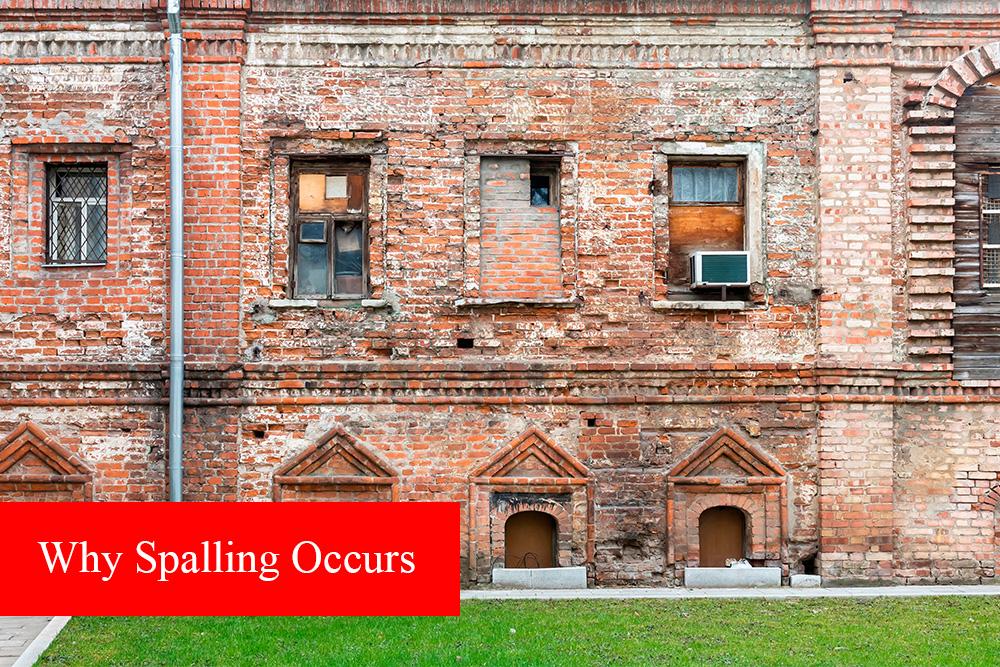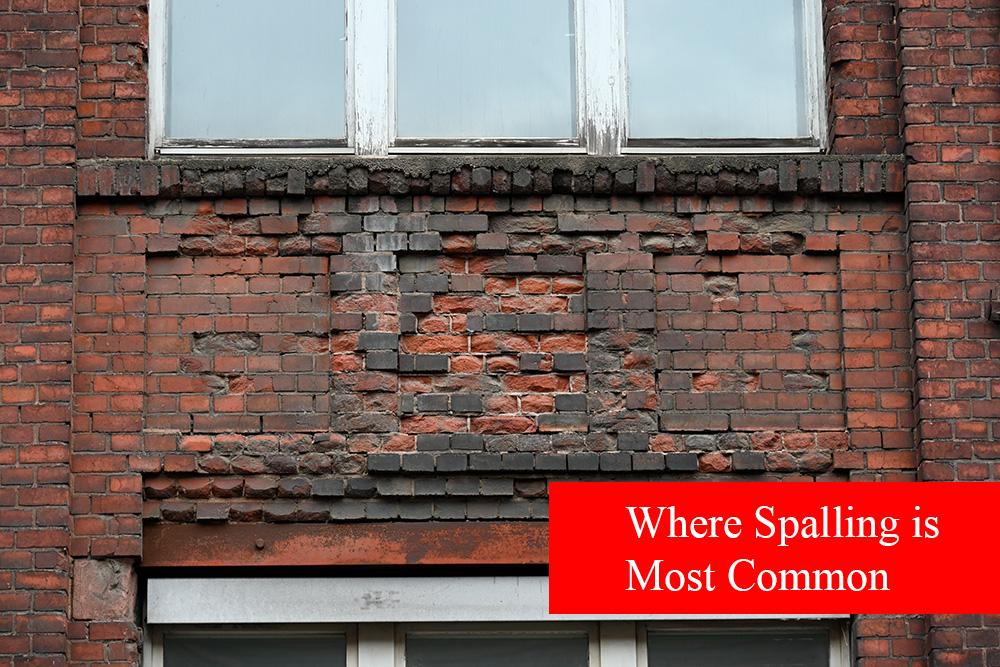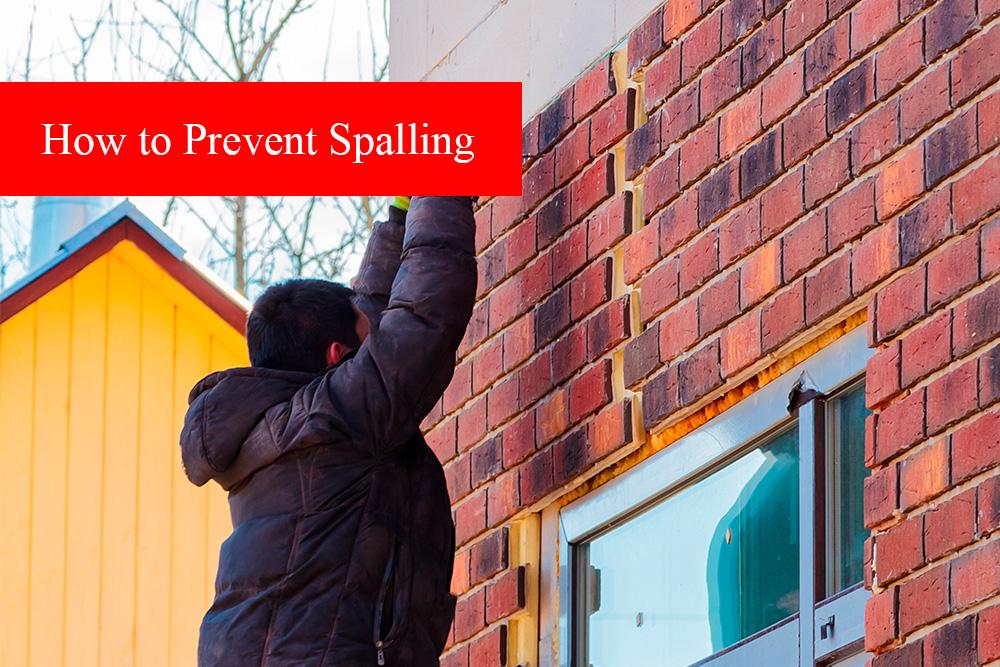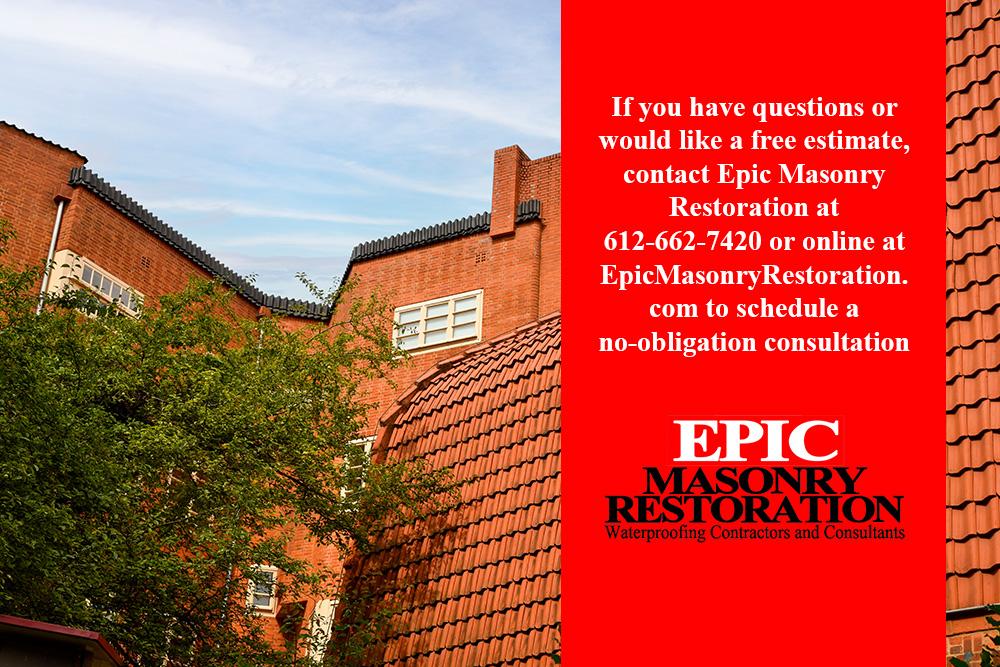While brick is an incredibly strong building material, it is not impervious to the elements, and damage can result if preventative measures are not taken. The three components of brick failure are moisture, time, and temperature. Rain, snow, wet soil, and freezing temperatures all damage brick structures, and the first sign of brick deterioration is on the brick’s surface as they begin to crumble or flake off. This flaking process referred to as “spalling,” causes the brick to disintegrate from the outside. Once bricks begin to show signs of deterioration, the cause must be found, and the problem addressed as soon as possible to prevent more extensive damage.
How to Stop Brick From Flaking
Why Spalling Occurs

Bricks are made of a clay compound fired in a kiln to harden the clay. This process results in the interior of the brick being somewhat softer than the outside as the interior is not exposed to the same amount of heat during the firing process. Spalling occurs as a result of moisture penetrating the brick and then freezing. The ice expanding just beneath the surface of the brick causes micro-fissures in the outside of the brick. This allows for more significant water infiltration, which results in larger cracks and still more water infiltration. As the process progresses, the surface of the bricks begins to flake off.
As the bricks absorb more water, the softer interior of the brick is exposed to the elements, and the damage becomes more and more extensive as the bricks continue to go through repeated freeze and thaw cycles. If left unchecked, this can result in the catastrophic failure of a part or even all of the structure that can end up requiring a full-scale brick replacement. Fortunately, there are ways of both stopping and preventing bricks from spalling and methods of brick repair to remediate any damage that has occurred.
Where Spalling And Brick Repair Are Most Common

While moisture can infiltrate almost any area of a brick structure, there are certain places where spalling is most likely to occur. Most notably, spalling happens in areas most exposed to constant moisture. These include any spots where water can accumulate and work its way into the mortar and bricks. Here is a list of the places where spalling is most likely to occur:
• Basements
• Damaged chimneys
• Door jams
• Foundation exteriors and any area covered by soil
• Gutters and downspouts
• Leaking windows
• Lower half of walls
• Recessed mortar joints
• Stair wells
• Window sills
Spalling Factors
While moisture is always the catalyst, there are three leading causes of moisture infiltrating and being trapped in bricks.
1) Incompatible Mortar
Modern mortars are much harder than historic lime-based mortars, and one major cause of brick cracking and spalling is using the wrong type of mortar. This is sometimes seen in historic buildings where the modern mortar was used to effect repairs. Proper mortar joint repair requires the brick and mortar to be compatible, where the bricks must be harder than the mortar binding them together. The mortar must also be more breathable than the bricks it surrounds, or moisture can, and usually will, become trapped between them.
While modern brick is designed to be used in conjunction with Portland cement mortar, modern mortar is too hard for softer bricks typically found in construction before 1920. This is because modern mortar has a tensile strength of between 750 and 3,000 PSI, whereas historic clay bricks must be paired with softer lime-based mortar with a much lower strength of only 70-250 PSI. These older bricks are incompatible with modern mortars because the harder mortar is not as flexible as lime mortar and does not expand and contract at the same rate as the older and softer bricks. This results in the harder mortar crushing the brick as the bricks expand with temperature fluctuations, requiring extensive brick repair.
2) Improper Sealing
Brick and mortar are both very porous, constantly absorbing and expelling moisture, and can even transfer moisture between the exterior and interior of a building. If the moisture movement is too powerful or inhibited by nonbreathable sealers, the internal pressure can easily damage the exterior of the brick. Moisture movement is often indicated by mineral deposits, called efflorescence, left on the brick and appear as a white or yellowish chalkish deposit on the exterior of the brick. Using a non-breathable sealer exacerbates the problem by preventing moisture from escaping through the exterior of the brick and causing damage during freezing weather.
3) Inappropriate Bricks Placement
There are different brick types, with some designed specifically for below-grade applications. Using the wrong type of brick, where it is in constant contact with the soil, is a sure-fire recipe for causing the bricks to deteriorate.
How to Prevent Spalling – Brick Repairs

The best way to deal with brick spalling is obviously by preventing it from happening in the first place. Here are the five top ways to stop bricks from flaking:
1) Use a “Breathable” Sealant
The best and easiest way to prevent spalling is to apply a breathable masonry sealant to the bricks to prevent moisture absorption. A breathable sealer, where the molecules in the sealer are larger than air molecules but smaller than water molecules, allows air to flow through the bricks while preventing water infiltration. There are a number of commercially made breathable masonry sealers available, and a traditional whitewash, made from water and lime, is also an effective breathable sealer.
2) Check the Mortar
Inspect the entire structure of older buildings. A quick test can be performed with a screwdriver by gently scratching the mortar. If it crumbles, it is most likely okay, but if it leaves no marks or only a scratch line, it is likely Portland cement mortar. If you find hard mortar, it should be replaced with lime mortar immediately. This procedure should only be done by a mason with experience in tuckpointing brick.
3) Proper Drainage
Mitigate water damage in wet climates by installing proper drainage systems to channel water away from the structure.
4) Avoid Pressure Washing
Pressure washing will force water into the pores of bricks and mortar and can damage older lime-based mortars. Occasional power washing may be okay, but the pressure must be kept to a minimum.
5) Replace Spalling Bricks
Because the situation will only get worse the longer it is ignored, it is imperative to have brick repair performed as soon as possible.
Having to deal with spalling on a commercial building can be highly discouraging for a building owner and is typically too big of a job to take on yourself. If you see bricks on your building showing signs of flaking, Epic Masonry Restoration has years of experience in restoring commercial buildings and mortar joint repair in Minneapolis and the St. Paul metro area. Epic also has performed countless restorations on historic masonry buildings and has the expertise to preserve the historic and financial value of your property. If you have questions or would like a free estimate, contact Epic Masonry Restoration at 612-662-7420 or online at EpicMasonryRestoration.com to schedule a no-obligation consultation.

